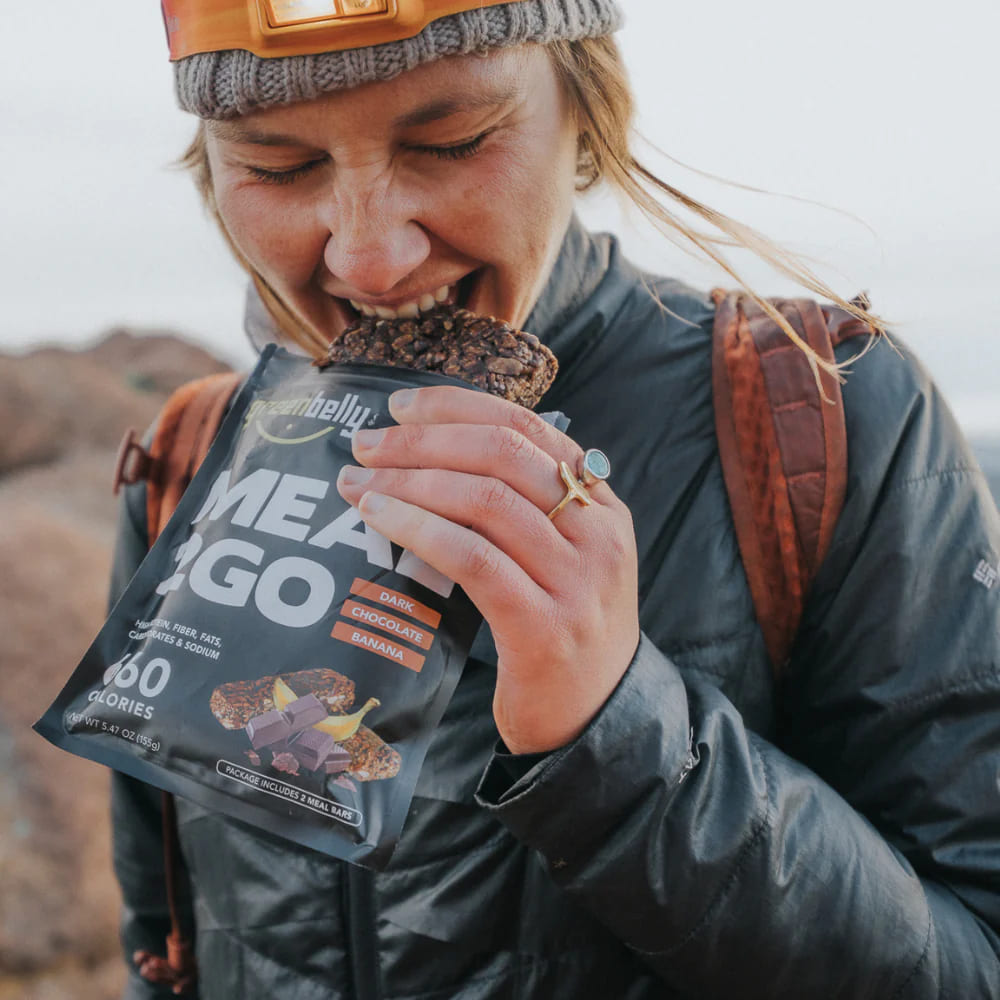© Cody Ayala
What is Mountain Glissading?
Glissading is a speedy way to slide down a steep hill of snow, usually while seated.
Think of it like sledding on your butt without the sled. Most climbers and mountaineers use an ice axe and most backpackers use trekking poles (or rocks!) to control their balance and speed.
Sounds crazy, huh? Sliding down a snowy mountain might sound dangerous. However, a mountain glissade can be a much safer alternative than hiking or walking down unstable snow. By sitting down, you lower your center of gravity and, subsequently, lower the possibility of falling. You also increase the amount of surface area you have in contact with the ground, which helps increase friction and maintain control on your descent. The last thing you want is to trip and start tumbling uncontrollably downhill.
In addition to speed and safety, how about some fun? Imagine a long day of strenuous backpacking and then getting the chance to sled away a few miles of trail.
Technique: How to Glissade

accelerating (left) and braking (right) with ice axe while glissading seated
Alright, let's talk about how to actually do it. Similar to skiing, it's all about comfortably controlling balance and speed. There are three methods of glissading - sitting, standing, and crouching.
1. Sitting Position: This is the easiest and most stable way to glissade. Not to mention, sitting down is certainly less strenuous than standing or crouching. To do this, sit on your butt, lean back, extend your feet out in front with legs slightly bent. While you are descending, use your ice axe and the heels of your boots to dig into the snow and slow your speed as needed.
2. Standing Position: You may prefer to do the standing glissade if you are already familiar with skiing... and know what you are doing. As you can imagine, your butt and clothes can get very wet and beat up while sitting on the snow. Standing can help keep your toosh safe and dry. You can typically maneuver faster standing. Some glissade routes are well trafficked and are settled a few feet deep. This can make visibility limited and standing that much more helpful.
3. Crouching Position: Somewhere in between the two. Your legs will get tired much faster crouching though. Get comfortable with this first before fully standing up. Again, use your ice axe or poles to rudder, maintain balance and slow if need be.
Before You Slide...
While we do love glissading, it ain't always the best option. Here are some things to assess before you turn your body into a bobsled.
Check the Snow Condition: Stability is ideal. You want snow that is settled and relatively dense. You won't get far in a mound of powder and can skid dangerously fast down ice. Use your axe to dig into the snow and check for ice.
Scan the Route: Be aware of what is below you when you glassading. You want to make sure you can clearly see the end of your descent - no surprise 'drop offs' please. If you can't see the bottom of the hill slope, try a different route and don't chance it. You also need an open and unobstructed hill to slide down without any risk of smashing into tress or rocks.
Limit Your Speed: You should glissade at the speed that you feel most comfortable with so that you can maintain your balance and have fun at the same time. Never get too fast where you are unable to stop if you need to, even if it seems like a clear and safe path to the bottom. If you do find yourself sliding out of control, check out how to self arrest - or, stop yourself depending on the position you are in.
Stay Waterproof: Wear waterproof pants, sit on your rain shell, your tent footprint, rainfly, or use a makeshift DIY sled. A cold wet butt is no fun to hike with and will be a pain to dry out back at camp.
Take off Crampons: Don't wear them. They might seem great for gripping the snow and controlling the descent. They might control your descent too much though causing you to keep your feet suspended in the air. And, if you lose control, you can land on them and get a nasty jab.
Protection: Snow can still create a lot of friction and cause abrasions. Wear gloves, head gear, butt gear, whatever you got. You don't want to realize your hands are blistering when it's too late to slow down.






 650-Calorie Fuel
650-Calorie Fuel